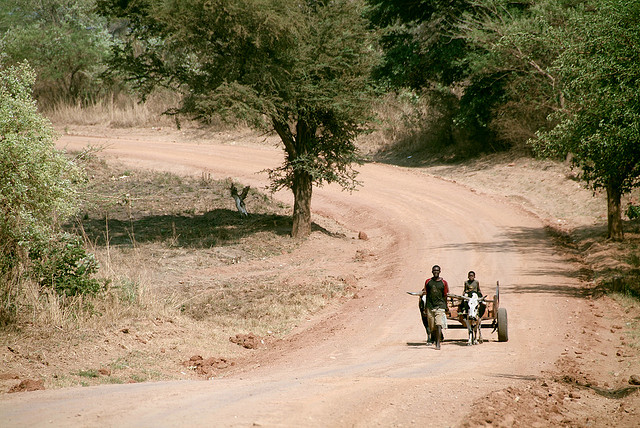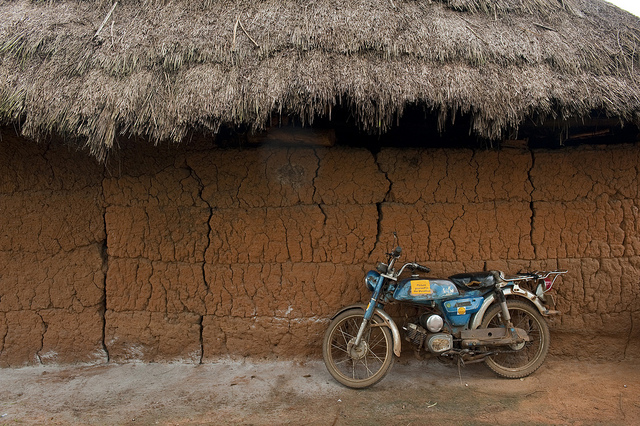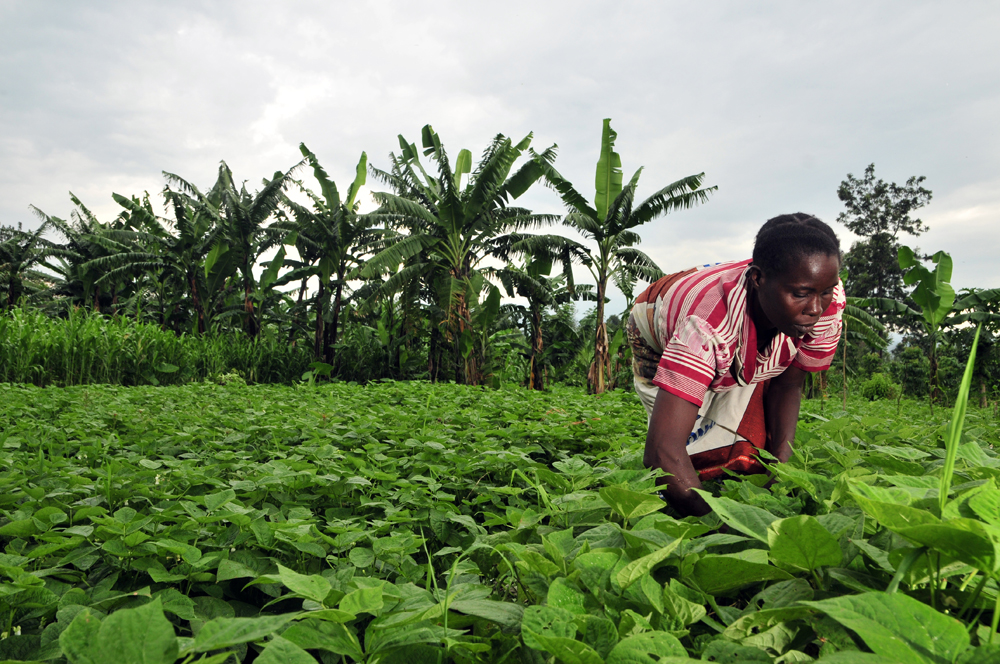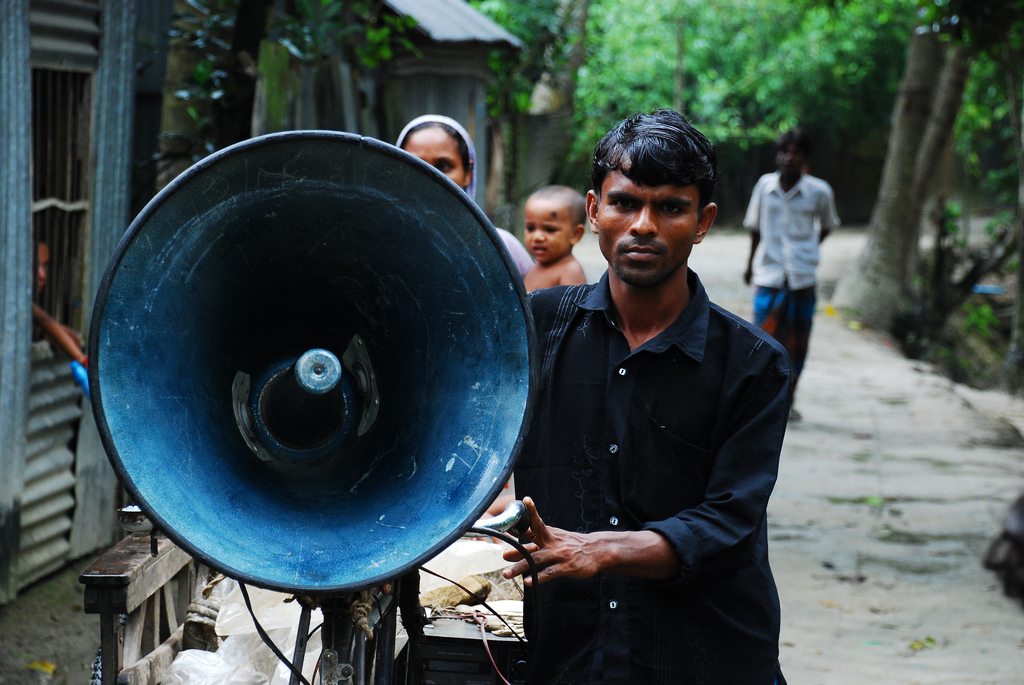To achieve maximum impact on food and nutrition security, knowledge and research policy should focus on local agriculture and food sectors. This means including small-scale farmers in regional food chains as well as making investments in the food system work for the rural poor by taking into account local environmental and cultural values.
These are the outcomes of a three-month dossier and debate initiated by The Broker in cooperation with the Dutch Food and Business Knowledge Forum, a new knowledge platform initiated by the Dutch Ministry of Foreign Affairs. This article focuses on what a knowledge agenda on food and nutrition security should look like and what actors should be involved.
Improving food security reduces poverty and hunger, and is also a foundation for economic development. However, despite notable progress in economic growth and improvements in welfare in recent decades, food security has not been attained in most developing countries and continues to be a deep-seated problem, especially in sub-Saharan African (SSA) countries.
One of the main causes of the current economic growth without food security is that small-scale farmers are not included in the formal food system and do not benefit from investments in agriculture and food system. They also lack access to knowledge to improve their situation. In other words, small-scale farmers’ potential has yet to be unleashed.
This is one of the main conclusions of the debate on food security organized by The Broker. The Broker asked several experts to determine what a comprehensive knowledge agenda on food and nutrition security would look like and what actors are (or should be) involved. (Read more about the outcome of this debate)
Our food security dossier
Over a period of ten weeks The Broker hosted a lively debate on the future knowledge and research agenda to secure food and nutrition security (see our dossier on food security). This resulted in 40 blog posts and 23 comments. More than 90 international experts from civil society organizations, governments, businesses, farmer organizations and knowledge institutions joined in the debate. Additionally, the discussion continued on the online platforms of the Agri-hubs in Uganda and Rwanda resulting in another 20 contributions. African entrepreneurs and farmers shared their local expertise on, for example, how ICT can improve the lives of women and men equally, what donor countries can do to improve regional trade, and how better to include informal markets. The debate extended to Twitter, where people recommended and retweeted content, and The Broker joined LinkedIn groups setting out questions on food security, nutrition and agriculture.
In the view of the participants, small farmers are key to food and nutrition security and sustainable (rural) development. They produce at least half of the global food supply, provide most of the employment in rural areas and provide local people with a fall-back option in times of economic crisis and shortages. It is all about creating resilient and inclusive food markets. The way to achieve this is to strengthen cooperatives and producer organizations, develop comprehensive business models, design a framework for public private partnerships that include small-scale farmers and take into account local cultural and environmental values, take away the constraints to access knowledge by farmers, and pursue coherent policies.
Traditionally food security policy mainly targets global hunger by implementing measures to step up food production. However, it often relies on a top-down approach. Lessons can be learned from the rice-producing countries in Africa, as was pointed out by Marco Wopereis (Deputy Director General and Director of Research for Development at AfricaRice). After the 2008 food crisis, governments and donors, in cooperation with agricultural research institutes and the private sector, initiated policies to increase the production of rice.
The results are promising: the average rice yield in sub-Sahara Africa jumped by about 30% from 2007 to 2012, and is increasing at a faster rate than the global average. This is overwhelmingly due to technological innovation, such as improved varieties and improved crop management, capacity building for farmers and farmers’ organizations, and close links between governments, farmers, knowledge institutes and international donors. It is crucial to maintain this trend, because rice consumption continues to increase in sub-Sahara Africa at an annual rate of 5%. However, to understand in detail what is happening, what the specific actors did to establish such a growth in rice production and how small-scale rice producers were involved, needs some more research.
The importance of urban agriculture
Food security is not only about rural populations. It is also important not to focus only on the resilience and production of rural farms, but also to ensure food security for the urban population. As rural-to-urban migration continues, food scarcity and malnutrition in urban areas is a growing problem. Better distribution mechanisms can help (see below), but another solution is producing food in and around the city. According to Diana Lee-Smith (Co-founder Mazingira Institute, Kenya), this urban and peri-urban agriculture offers many opportunities to feed the growing population in the cities, though urban agricultural policy needs to target the urban poor more. Currently, urban agriculture targets city-dwellers with access to backyards to produce food. But the urban poor tend to live in dense slums or informal settlements with little access to land for growing crops or keeping livestock. Ironically, the poor have been found to be under-represented among those practising urban farming.

Effective (regional) distribution
Investing in food security means more than optimizing production by small farmers. More can be gained from optimizing regional trade (e.g. read Ian Sayers‘ article, Coordinator of Sector Development Programmes and Head of Product Sector Development) and informal food markets (as Joost Nelen writes, adviser Agriculture West-Africa for SNV), rather than focusing on global trade and the formal markets. To avoid the waste of more than 50% of food grown in Africa before it reaches the markets 2, food production must go hand in hand with improvements in transport infrastructure, storage facilities, and border regulations.
For example, a large number of non-tariff measures (NTMs) in developing areas, such as plant pest control, health and food safety, are not yet harmonized between neighbouring states. The demand for agri-food products is very variable, and limited transport linkages or mal-equipped border-crossing points undermine an efficient flow of food products and generate excessive spoilage. Food security policies that concentrate too much on increasing productivity might negatively impact on suppliers because the imposed quality ‘standards’ increase costs.
This will also hamper the poor farmers from entering the formal food markets. One challenging step to improve regional distribution is therefore to integrate informal markets. ‘Fair‘ and ‘sustainable’ trade initiatives aiming to include small-scale farmers in modern markets struggle with formalization, often with mixed results. However, integrating informal and formal markets should be given more attention in food security policy. Not only because most of the food passes through these markets in Africa and Asia, but also because in informal markets traders, vendors and farmers are highly interdependent, and cooperate closely. In addition, women can be involved more easily as they occupy a prominent place in informal markets as farmers, processors and traders.
Food security policies and research should aim to improve both production and distribution, but as budgets are limited, there is some disagreement whether to focus on distribution or not. Too much emphasis on regional distribution for example would result in some very poor countries importing cheaper cash crops from neighbouring countries and destroying their own agricultural potential. 3
Environmental and cultural valorisation
There is also criticism of the emphasis on efficient value chains. This has resulted in agricultural production that is detached ‘from space and place’. 4 Alternative agricultural models should look to agro-ecological principles, a wide variety of crops and local agricultural practices, and be adapted to local and natural conditions. They provide more employment, partly due to being embedded in social communities, and can better respond to fluctuations in markets, prices and weather. Opponents argue that this form of agriculture is not productive enough and requires too much land to feed the growing population. However, as the FAO showed, organic farms often generate higher economic returns especially in the non-optimal conditions that apply in most developing countries (e.g. read Ina Horlings‘s article, Assistant Professor at the Rural Sociology Group of Wageningen UR).
Agro-ecological principles
Successful examples of alternative agricultural models based on agro-ecological principles can be seen in Africa, Asia and Latin America. For example, in Brazil, 15 million hectares have been planted under the regime of “Plantio direto”. Many of the ‘Clubes Amigos da Terra’, or Friends of the Earth, are involved in this. The soil is not mechanically disturbed but permanently covered by a variety of successive crops. This system has led to higher yields, reduced labour costs, more variety in livestock and food, and more food security for small farmers. China has shown a strong boost in organic farming in recent years. An example is the experiment in the village of Fushan that led to an improvement in the local economic situation and the production of biogas. In addition, the soil structure improved, the use of artificial nitrogen decreased and food yields increased. (From: Profitable Organic Farming)

A refocus on the food system should not look solely at environmental values, but also at cultural values. In Latin America experiments have started that enhance processes of ‘bio-cultural diversity valorisation’ of food systems (read the article of Claudia Ranaboldo, Senior Researcher at RIMISP, the Latin-American Center for Rural Development). Food culture and its world of traditions, rituals, tools, history and legends is an underestimated vehicle for promoting positive behaviours, to be nurtured with knowledge exchange events, taste laboratories, fairs, home and school gardens, awareness-raising campaigns, recipe books, school meals and cooking classes.
A local food system can boost the self-esteem and the promotion of the own cultural roots not only for producers but also for cooks and non-agricultural rural entrepreneurs, in tourism and education, for example. Small-scale farmers can manage and use traditional agro- and wild biodiversity to their comparative economic advantage on the premise that the products marketed are wanted by, and offer nutritional and sociocultural benefits to, consumers. If so, local knowledge should be integrated with scientific research to establish and coordinate a trans-disciplinary research & action learning system addressing sustainability and resilience. This will result in a new class of entrepreneurs who are capable of investing in a social and cultural shared practice to drive change and to accomplish effective private association and public-private partnerships based on local cultural roots.
Domestic entrepreurship
Thus, food security policy can achieve maximum impact by investing in the domestic agricultural and food sector. This automatically means investing in domestic entrepreneurship, developing local SMEs and strengthening national economic and innovative capacities.
However, this is threatened in two ways. First donors have a severely negative impact when they support policy that mainly promotes multinational involvement and export rather than benefiting local farmers (read more on this in the other synopsis article of this debate ‘PPPs: listen to the farmers‘). Second, the increased demand for biofuels has hindered the production of food in many developing countries and increased tensions and land conflicts (e.g. read Gloria Pracucci‘s, Transnational Institute, and Jasper van Teeffelen‘s, Evert Vermeer Foundation, articles). Large-scale land acquisitions by foreigners or local elites have not lifted small-scale farmers out of poverty, or increased agricultural productivity and food security. Speculative land acquisitions often leave fertile land unused, and deprive local communities of vital resources. 5 The land has been informally cultivated for grazing or pasture by local farmers, while, watercourses may be used for fishing. Selling this land to large private organizations or rich individuals (‘land grabbing’) causes many farmers to emigrate from their land. The interventions of donors to enhance food security make no sense if the same donors encourage land grabbing and the production of biofuels.
If resilient and inclusive food markets are the aim of food security policies, the impact of land grabs and the involvement of agro-businesses should at least be monitored. This is important because if the 1.2 billion small-scale farmers of the world (working in over 500 million farms) 6 are too rapidly involved into agri-food markets in a commercially viable way this may harm the creation of resilient and inclusive food markets. Other types of investments are preferable, at another scale and pace. The positive returns of investments in agriculture come when these occur in processing plants and input delivery as well as in trade, banking and insurance for the primary production of a more modest scale (more labour-intensive) and in rural areas, meaning that they generate more employment for the rural poor.
There is a widespread fear that hunger and socioeconomic disruption could be sparked by economic transformations that are imposed without a bottom-up approach (with capital-intensive investments). Specialization is key for structural transformation, employment creation and income growth. Kees Blokland (managing director Agriterra) refers to a study in over 2,500 Chinese villages that confirms this, showing how the presence of producer organizations fostered agricultural specialization, which led to increased rural incomes. This means that villages with more cooperatives and more farmers in cooperatives were wealthier and prosperous than others.
Therefore comprehensive business models should be studied on how they take account of elements necessary for successful farmers and rural entrepreneurs, farmers’ organizations, farms, rural enterprises, complete value chain development and targeting special populations including young people, women and rural entrepreneurial role models and mentors (e.g. read Nelson Godfried Agyemang‘s article, secretary of Farmers of Atwima Kwanwoma Association (FAKA) and secretary general of Coalition of Farmers Ghana (COFAG)). Cooperatives can be a solution to enable asset-poor farmers to participate in and compete with capital intensive agriculture by, for example, making it possible for them to buy machines to intensify their farm operations. Thanks to good connections to internet and mobile devices small-scale farmers can find new and innovative ways to organise themselves within cooperatives.
Local access to basic sustainable energy
Local access to basic sustainable energy can help trigger innovative processes and specialization in rural areas, writes Andy Wehkamp (Managing Director Renewable Energy SNV). 1.3 billion people are without access to electricity and 2.6 billion people rely on the traditional use of biomass for cooking. This harms their health and the environment. Improving access to renewable energy in rural energy helps improve cooking facilities, food production and processing. It also reduces the food sector’s dependence on fossil fuels, lowers emissions and helps to achieve sustainable development goals to tackle climate change.

The knowledge agenda
Because the performance of farmers is critical to the success of all the other actors in the value chain, they endeavour to ensure that the farmers receive sufficient knowledge on appropriate production practices, use of improved agricultural inputs, post-harvest handling, pest management, etc. However, despite this dependency, the other actors in the value chain often withhold information, which they benefit from, from farmers.
It remains a challenge how knowledge can reach farmers more effectively and what the constraints are to get access to information. Most knowledge-sharing interventions with impacts on farmers are pragmatic and do not include all farmers as they are commodity-specific, driven by economic incentives, dependent on the degree of organization of farmers, or are of strategic importance (read the article of Mainza Mugoya, Programme Officer at the Eastern Africa Farmers Federation (EAFFU), Kenya). For example, there are many cases of cooperatives that have their own extension services departments, and offer artificial insemination services to their members. However, this is only suitable for well organized cooperatives.
The explosion in cell phone ownership and coverage has provided some relief to information-poor farmers, as Bruce Campbell, Director of the CGIAR Research Program on Climate Change, Agriculture and Food Security (CCAFS), explains. There are plenty of applications for mobile devices on the market that are suitable for poor farmers, for example with SMS services. Cell phones by themselves are, of course, not enough. The creativity of scientists, communication specialists and software developers, working with farmers, are needed to ensure that the messages reaching farmers are timely and fit their specific needs. Furthermore, ICTs are especially handy to establish a two-way communication in which small-scale farmers can participate in knowledge-sharing with scientists, local governments, agricultural research institutes, and software developers. However, there is a risk that technology-driven and knowledge-based policy can reinforce social inequity, especially for women. Experience shows that ICT projects can widen the gender gap.
Some critics, argue that agricultural research has grown into a full-fledged industry, to the point that research outputs are sometimes considered an end, and not a means to an end. There are many national, regional and international research organizations that do not have an effective link to their end-users. The problem persists because of various factors, including weak farmer organizations and inadequate dissemination skills and experience within the research organizations. Food and nutrition research organizations also focus too much on connecting science and knowledge with policies and not with politics. This is an important distinction as policy-makers do not always really (want to) listen, unless beneficiaries put pressure on them, according to Claudio Schuftan (freelance consultant in public health and nutrition). Therefore empowering local communities and giving them access to relevant information is important but is mostly overseen by the agricultural research institutes.

Political backing
Decentralization processes are therefore key. People need a participatory system of local governance that is accountable to them and can access sufficient resources and decision-making authority to solve local problems, and a structure that guarantees the voice of women and is able to develop long-term plans, writes John Coonrod (Executive Vice President of The Hunger Project). However, NGOs and donors have on many occasions done democracy a ‘disservice’ by taking the shortcut of creating parallel structures – community management committees for various projects that are not integrated with the local government structure. 7 This undermines sustainable, accountable local self-governance.
Without a well-organized rural population with accountable, effective, inclusive rural governance, there is very little likelihood that the private sector approach and value-chain development will contribute to poverty reduction.
Ethiopia leads the way
Tagel Gebrehiwot (post-doctoral researcher at the Laboratory for Social Interaction and Economic Behaviour of University of Twente) writes in his article that the Ethiopian government’s integrated Household Food Security Package (FSP) programme can shed some light on when food security policy is successful or not. The intention of the programme is to secure food at household level by diversifying the income base of the poor through provision of credit for a range of activities provided in a package. To this end, identifying the basic interest of the rural poor and providing the required resources, technical assistance and training to engage in their choice of activities is the prime concern of the programme.
The policy impact analysis showed that the physical food calorie intake of the FSP participants was 41.8 per cent higher than that of households not involved in the programme. This significant effect is partly due to the strong coordination among different key players in the rural development that contributed to the success of the programme. Ensuring food security necessitates policy and investment reforms on various aspects, include human capital, rural infrastructure, natural resources management and agricultural research.
What has to be done on the international level? The reality is that documents, frameworks and guidelines are full of the rights-based approach and inclusion of small-scale farmers, but in fact they remain toothless (read for example the article of Stineke Oenema, program coordinator for the Food and Nutrition Security program of ICCO). Take the Committee on World Food Security (CFS), which was reformed to allow civil society and direct representatives of people suffering from hunger a solid say in policies that affect them. The Rome principles were endorsed, with the right to food again being acknowledged as the central principle, and the central role of small-scale food producers was emphasized.
Also, the European Union developed a comprehensive policy framework that builds on three main principles: a central role for small-scale food producers, agro-ecological production, and the right to food. And it carefully addresses the four pillars: availability of food, access to food, utilization of food (nutritional aspects) and stability. However, almost three years later, the implementation plan has still not been realized.
Investments channelled through the public window do seem to take into account local input of farmers’ associations and other civil society groups, while the private sector window, specifically created to support private sector development to increase the effectiveness of agricultural investment and growth, does not seem to work according to the principle of the central role of small-scale producers. Therefore many questions remain open. How coherent is this with policies that place small-scale producers at the centre? How can we ensure that large investments channelled through private companies or foreign donors do not hamper the investment climate for small-scale farmers?
Footnotes
- The World Health Organization defines three facets of food security: food availability, food access, and food use. Food availability is having available sufficient quantities of food on a consistent basis. Food access is having sufficient resources, both economic and physical, to obtain appropriate foods for a nutritious diet. Food use is the appropriate use based on knowledge of basic nutrition and care, as well as adequate water and sanitation. The Food and Agriculture Organization (FAO) adds a fourth facet: the stability of the first three dimensions of food security over time.
- This percentage was mentioned in Ian Sayers‘ blog post.
- Arguments made on the Rwanda Agri-Hub forum in a debate moderated by The Broker.
- From Ina Horlings’ blog post ‘Profitable organic farming’
- Read the article ‘Untangling the myths of the global land rush’, by Annelies Zoomers and Evert-jan Quak.
- As mentioned in Kees Blokland’s blog post.
- From John Coonrod’s blog post ‘Rural governance that works’.
